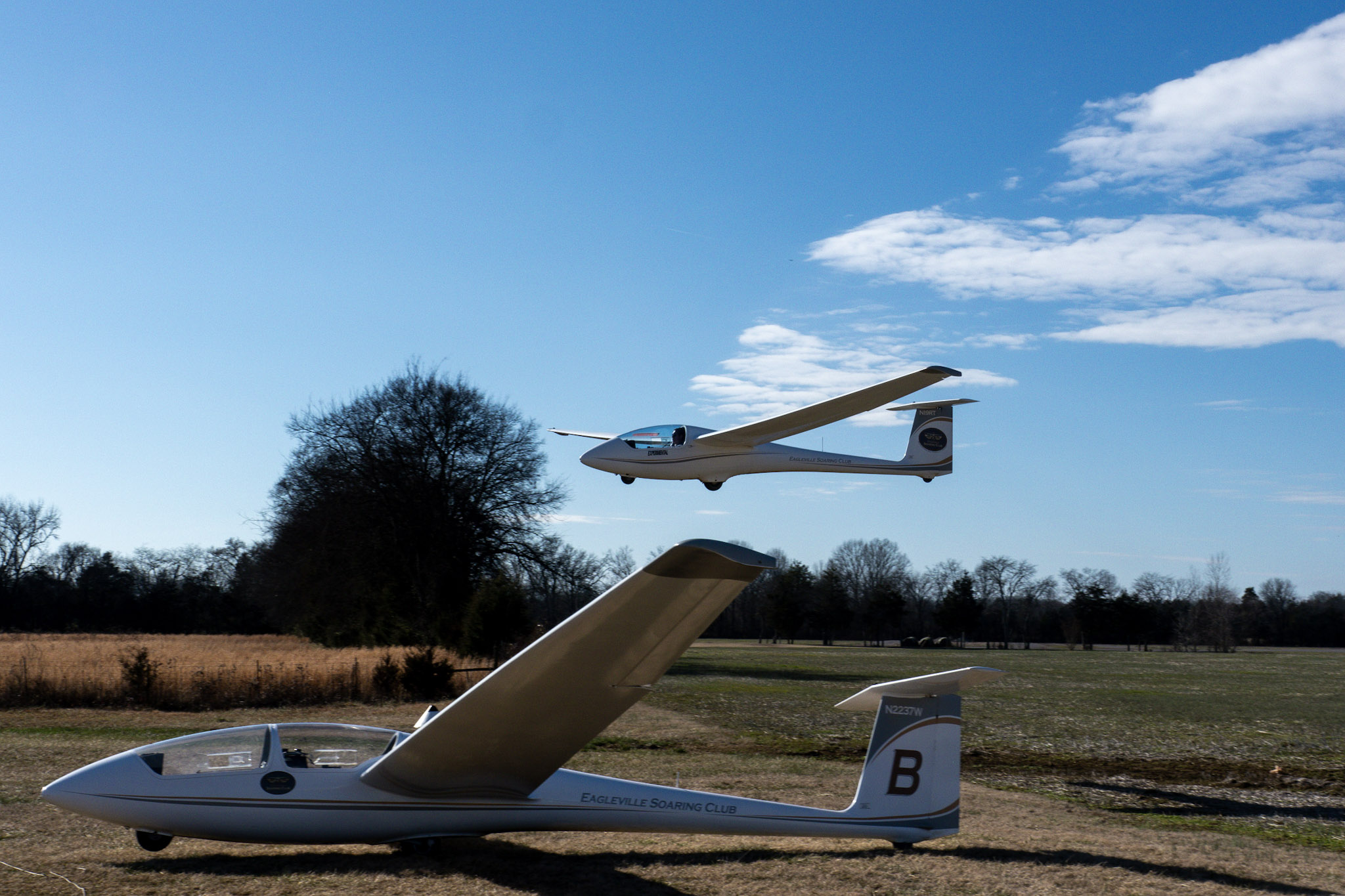Learning to Fly a Glider
Becoming a pilot can be an immensely rewarding endeavor, but it is one that many people assume is out of their reach. Learning to fly with the Eagleville Soaring Club can make the dream of flight more attainable.
Flying gliders reinforces the importance of solid stick-and-rudder skills, the backbone of any pilot's experience. Becoming a glider pilot also teaches pilots about energy management and situational awareness, critical skills that transfer well to powered flight
A large portion of the Eagleville Soaring Club membership consists of student pilots with no prior experience.

-
- Experienced Instructors
Eagleville Soaring Club has a highly experienced group of instructors that are eager to teach pilots of all skill levels to glider flight. We treat every flight as an opportunity to learn, whether introducing a brand new student to flying for the first time, or re-introducing an experienced pilot to flying after years away.
Most weekend days have at least one instructor available, sometimes more than one during peak flying season.
- Structured and progressive pilot education
Learning to fly is a matter of deliberate progression, with ever more sophisticated skills being taught by instructors and then demonstrated by students. Each of our intructors may approach this progression in their own unique way, but they all have one thing in common: each lesson you fly is based around you and your rate of progress.
Every student is different. Some students pick up the aerotow very quickly, other struggle with it. Some seem like they are born to center thermals, while the same students may struggle with the landing pattern, or radio work. We all have our strengths and weaknesses. Structured, progressive pilot education focuses on these strengths and weaknesses and ensures that the training curriculum is adjusted to meet each pilots unique needs.
We want all of our students to succeed in their goals, whether those goals are just to solo, or become a cross-country soaring pilot.
- The importance of consistency
One of the most important drivers of progress during flight training, especially glider flying, is consistency. This can also be one of the more challenging aspects of becoming a glider pilot. We are more dependent on the weather than powered flight. We also fly mostly on weekends. We also have many student pilots who all want training time.
These challenges are not meant to discourage new pilots. They can just as easily encourage that new pilots show up at the glider field, assist their fellow pilots with launches, retrievals, and ground operations. Just being at the glider field exposes student pilots to many of the critical safety procedures that keep us flying. Being at the glider field consistently also increases esposure to training. More time at the field means more time in the air.
- Becoming a pilot
The FAA requires that a student pilot obtain a certain number of flights and be able to demonstrate a standardized set of skills in order to pass a practical test. Students are welcome to read the latest regulations on the Soaring Society of America website.
At a rate of roughly one lesson per weekend, students at Eagleville Soaring Club with no prior experience can possibly expect to solo a glider within one season of consistent training, and potentially prepare for their glider checkride within a second season. Some students may progress faster, and some may take longer based on number of weekends spent at the field. Each year we see several students pass their checkrides and graduate from student to Glider Pilot. A milestone worth celebrating.
